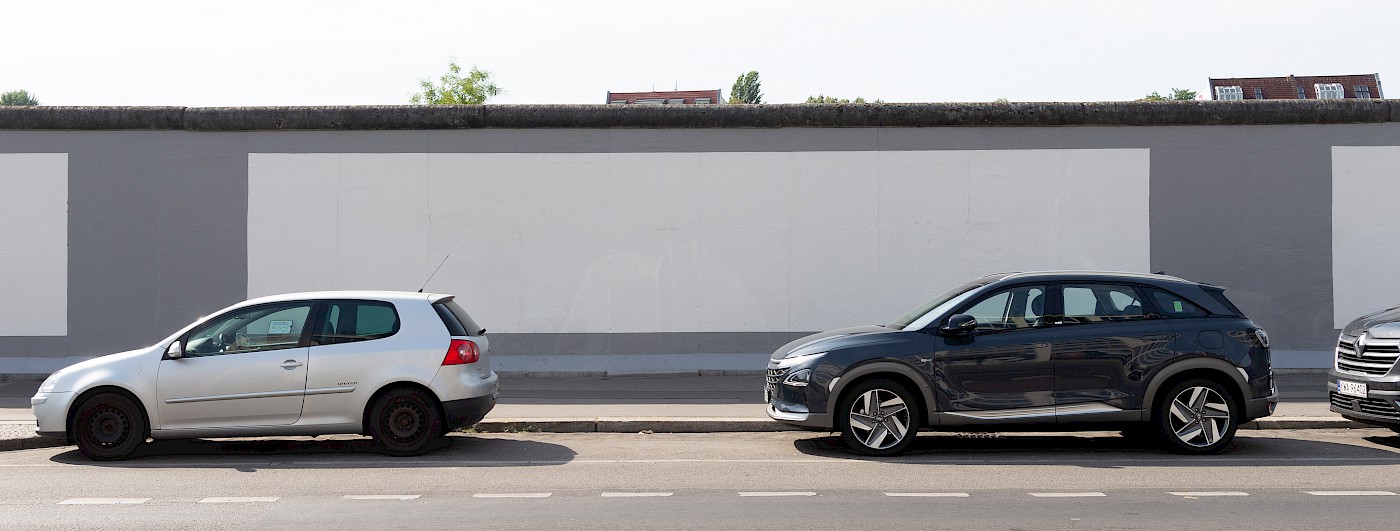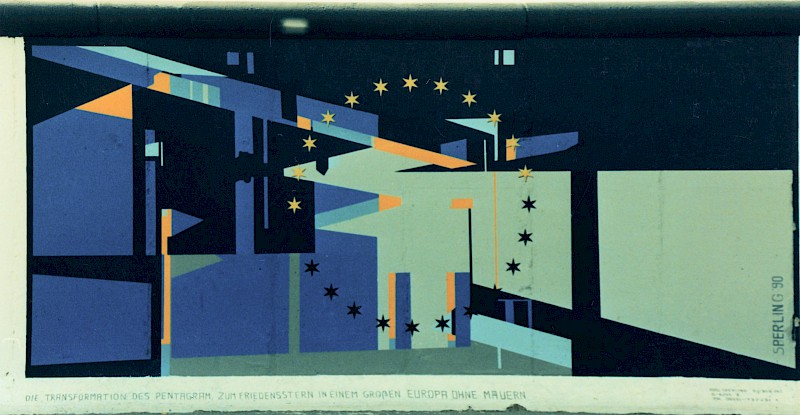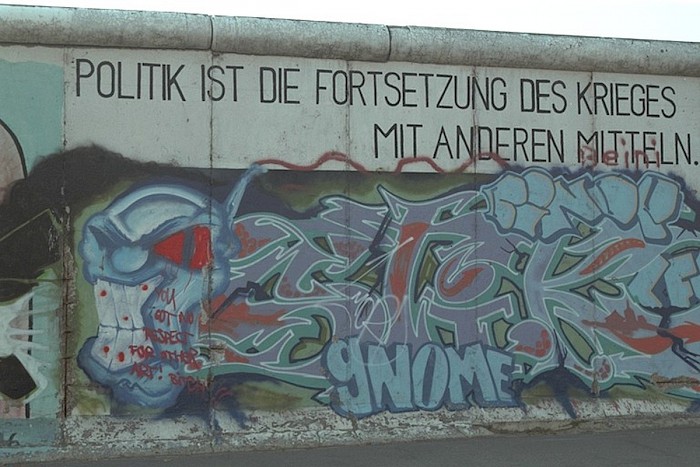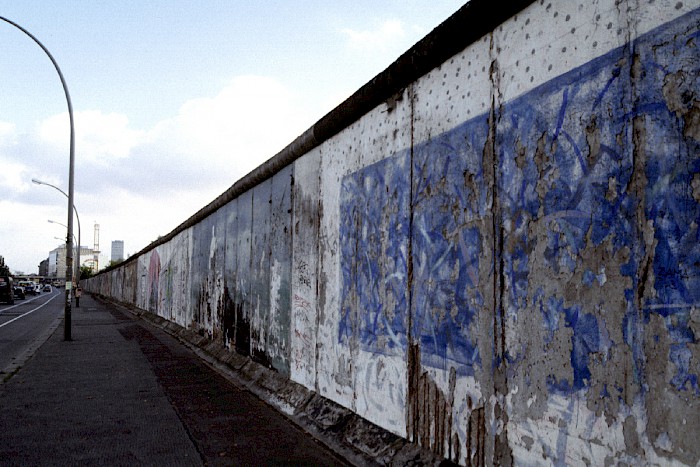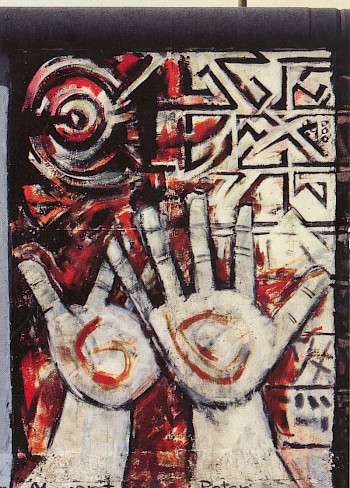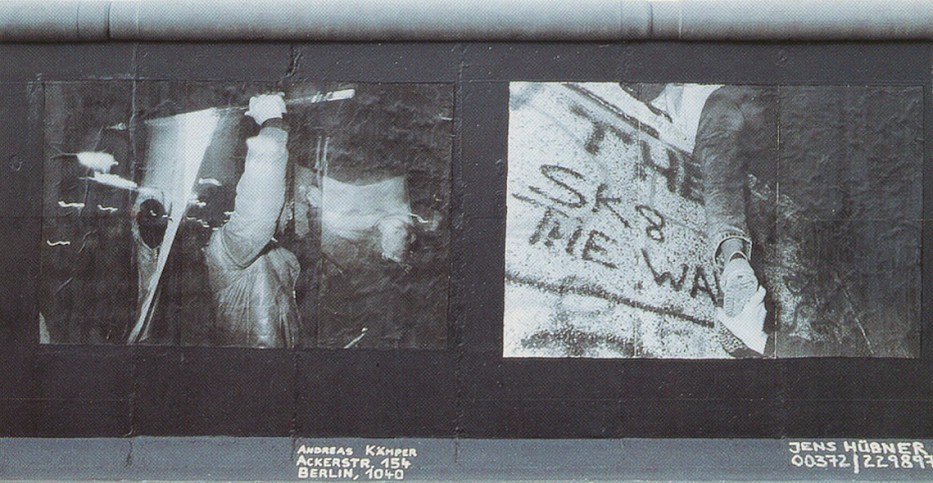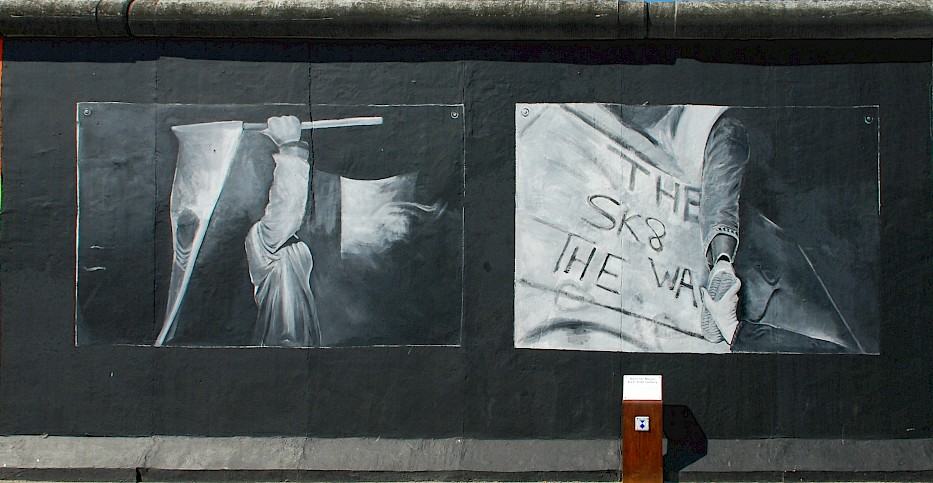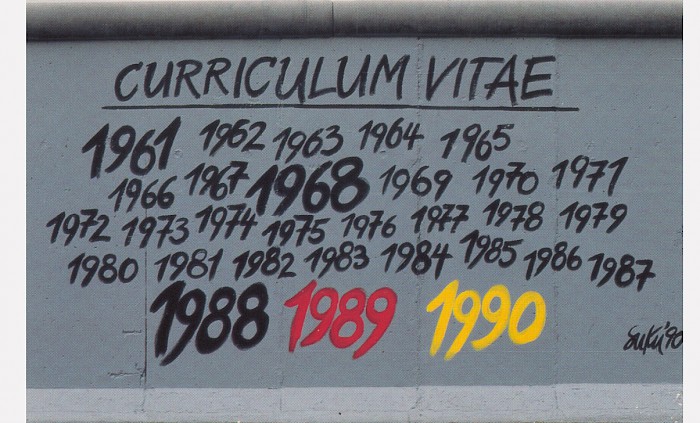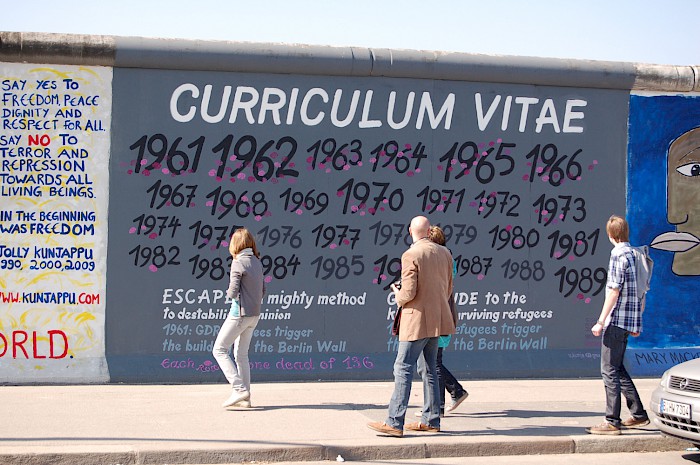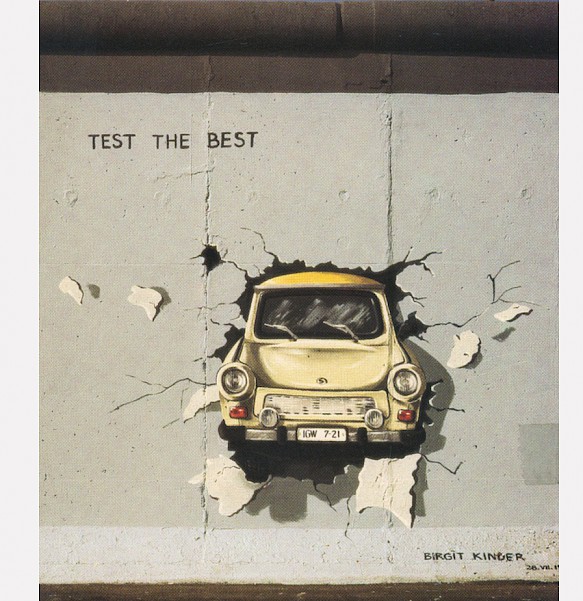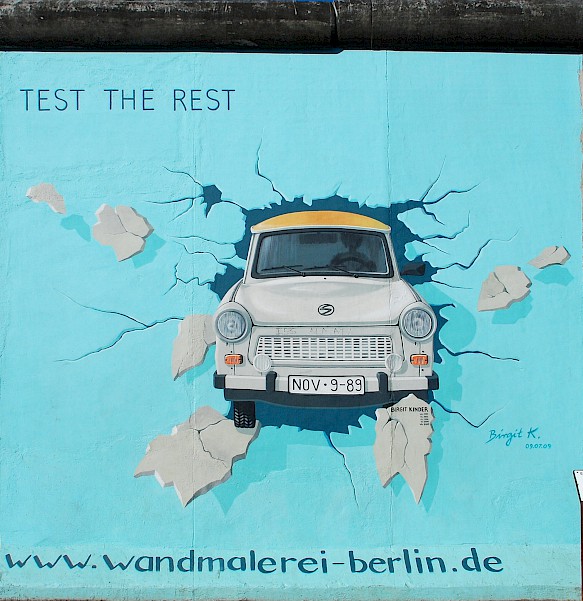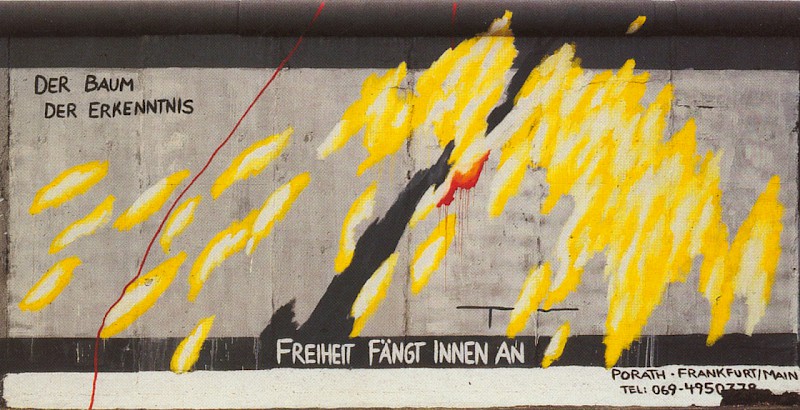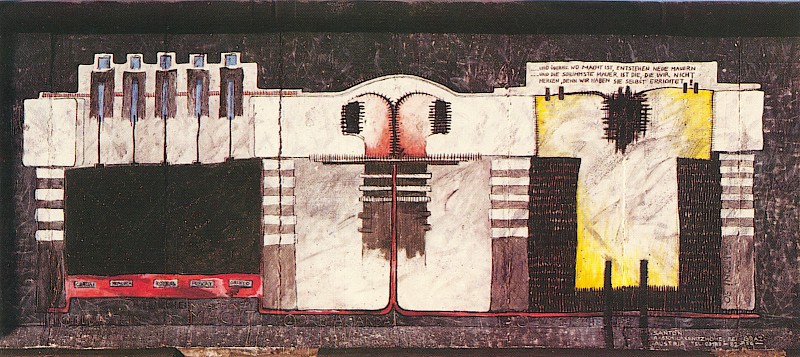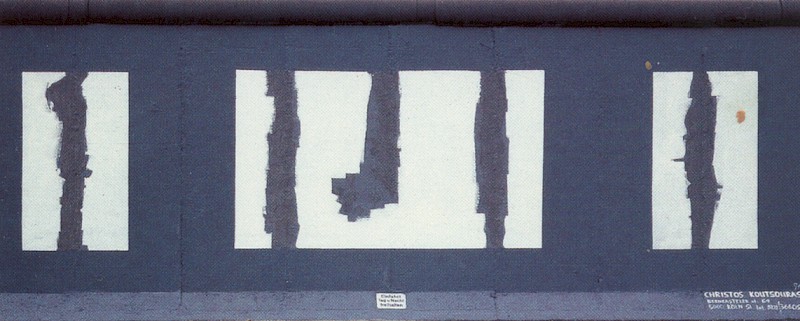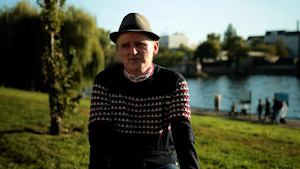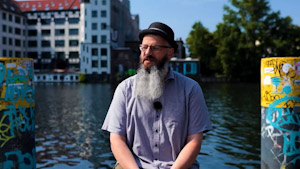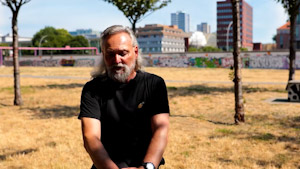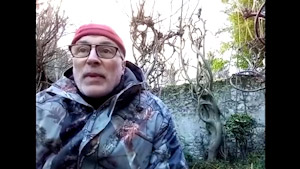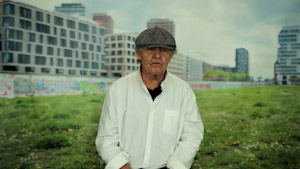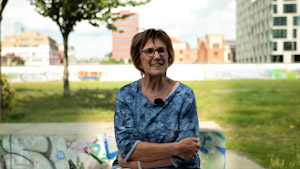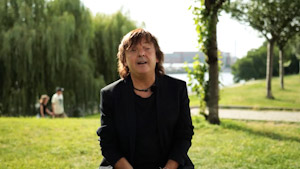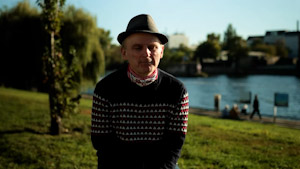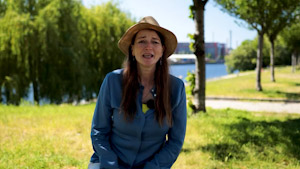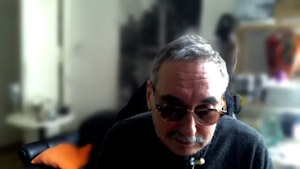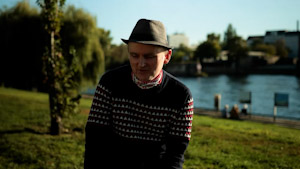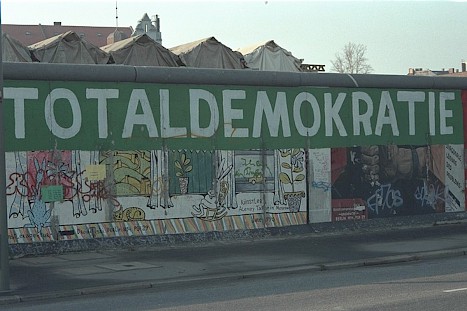
In 1990, the East Side Gallery artworks looked different than they do today. By the 1990s, the poorly-suited painting surface, graffiti and weather damage had made it necessary for the artists to repaint parts or all of their murals. The artists worked tirelessly on several occasions, raising funds and paying for the related expenses themselves. In 1996, several artists founded the initiative "East Side Gallery" with artist Kani Alavi as its chairman. The initiative worked for more than 30 years to preserve the world’s longest gallery.
"Street Art is ephemeral art. When the Wall lives and the people live, the Wall will inevitably get covered, and that which was originally there will cease to exist."
"I experienced this as a re-encounter with this history. [...] And that was a good thing. And a good sign, too, I thought."
Restoration of the Gallery
"It was really a major operation, fully organized. Whereas in 1990 it had been more like a… guerilla-art-happening here."
A first major refurbishment took place in 1996 and more artworks were repaired in 2000. However, the masonry beneath the artworks was crumbling and the paintings were in a dismal state, many of them barely recognizable. The artists' initiative was able to convince the city of Berlin and the Lotto Foundation that major renovations were necessary, but it was later determined that the cost of renovating and restoring all 106 paintings would have been astronomical. Some murals were so badly damaged that their restoration seemed impossible. In 2008/2009, in consultation with the historic conservation authorities and the state of Berlin, the decision was made to start from scratch: The paintings were removed by sandblasting, the concrete was repaired and a primer was added with white paint. This stabilized the surface of the artworks and preserved the original structure. The restoration work was conducted by the Gesellschaft der behutsamen Stadterneuerung mbH (S.T.E.R.N.), which had a budget of more than 2 million euros.
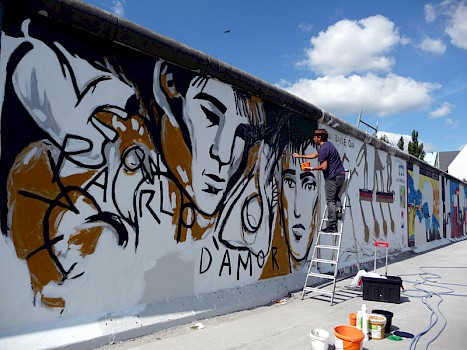
"It was meant to be the way it was before. […] We have this issue of change again. One changes and I’m copying myself."
Eighty-two artists painted their artworks a second time on the renovated white wall. Most of them painted works that were faithful to their original version; they still had their sketches from 1990 and tried to recreate the original color tones. Some made changes to express something different than what they had been feeling in 1990. In some cases, the artists had developed a different artistic style. Seventeen artworks were copied by other East Side Gallery artists because the original artists had died, could not be found or chose not to participate. Five artists denied permission to let their work be copied. They disagreed with the renovation process and criticized the use of public funds. Their works no longer exist today and the segments where their works had once been were painted a whitish-gray following the Wall’s restoration.
"Hands" by Peter Russell and Margaret Hunter was the only mural not to be restored. Instead, its 1990 condition was conserved and serves as a reminder of what the original murals looked like.
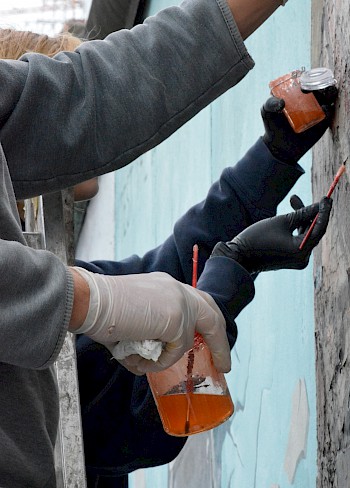
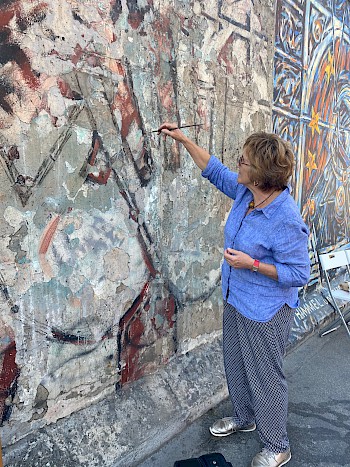
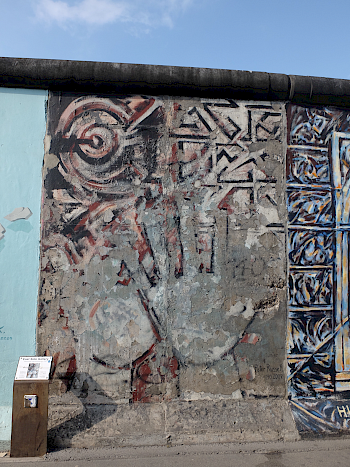
Art or monument?
Is the East Side Gallery an authentic monument despite its restoration?
How did the artists feel about recreating their works?
The artists respond to the question: art or monument?
Controversy "Art or monument"
PDF-Download: An Authentic Monument? – An essay by Leo Schmidt (in German)
Below are some of the changes that were made to the paintings:
Jim Avignon: “Doin it cool for the East Side“
"I wanted to be ironic, not in a mean way, but rather to laugh about it, depicting the Berlin of 2013."
Jim Avignon did not participate in the restoration of his painting. He was critical of reconstructing the original murals, arguing that art in public space should always relate to current conditions. With this in mind, he completely repainted his mural in 2013, assisted by Berlin art students. The original painting from 1990 depicted several events and experiences related to the fall of the Wall in 1989/1990. His new painting is a panorama of contemporary Berlin by day and by night.
Jim Avignon: “Doin it cool for the East Side“
Hans-Peter Dürhager and Ralf Jesse: “Der müde Tod“
The artists added a new color scheme to their painting during the renovation work in 2008/2009.

Hans-Peter Dürhager und Ralf Jesse: “Der müde Tod“
Andreas Kämper and Jens Hübner: “Untitled“
"After all, it wasn't meant to be a work of art that lasted forever. At least that is how I understood it, just as others did, too, fortunately."
In 1990, the artists pasted two large-format photos onto the wall. During the renovation work in 2008/2009, another East Side Gallery artist reconstructed their work. Unlike the original, on which the photo had been pasted, in this version it was painted to the wall. Andreas Kämper had not been informed of the renovation and complained to the Kreuzberg-Friedrichshain district office about the copy. He was not permitted, however, to recreate his picture true to the original.
Andreas Kämper und Jens Hübner: “Untitled“
Susanne Kunjappu-Jellinek: “Curriculum Vitae“
During the 2008/2009 restoration work, the artist added a new color scheme to the mural and changed other details. The 1990 painting had conveyed the joy felt over the fall of the Wall; twenty years later, the artist shifted to remembering the victims of the Berlin Wall. For each person who had died, she painted a rose petal on the corresponding year of their death.
Susanne Kunjappu-Jellinek: “Curriculum Vitae“
Birgit Kinder: “Test the Rest“
"I thought I’d shift from ‘Test the Best’ – we don’t need to test that anymore since it’s the same on both sides – so now we can ‘Test the Rest,’ prompting people to say, ‘Where’s the rest of the Wall?’"
Birgit Kinder’s famous Trabi titled "Test the Best" in 1990 was a joyful expression of the new chance to get to know the West. She changed the title to "Test the Rest" in 2009. This was her way of criticizing that the East Side Gallery had not been preserved as a total work of art. Birgit Kinder repainted her mural four times and made changes, for example to the license plate.
Birgit Kinder: “Test the Rest“
Jay One: “Untitled“
In 1990, the French artist Jacky Ramier dedicated his painting on the East Side Gallery to members of the young graffiti and style scene in West Berlin and Europe. Their names are visible in the background. In the 2009 version, he reduced the number of names, highlighting the Kreuzberg youth gang 36 Boys and gang founder Maxim, along with others.
Andreas Paulun and Hervé Morlay: “Amour, Paix-Sagesse“
"Someone had added a really cute stencil – the head of a smiling boy – and now that is part of the piece. I find this funny and it was kind of the goal to leave space somewhere for intelligent people to add something without destroying my work.”
Hervé Morlay made major changes to his painting in 2009, for which he was criticized by other East Side Gallery artists. The 1990 painting was less colorful and had not been primed. Paulun and Morlay had not even bothered to remove the posters from the wall in 1990 and left space open for other street artists to add their contributions. Their 2009 painting seems more complete than the original. They added new portraits of famous people but also used some of the same stencils from 1990.

Andreas Paulun und Hervé Morlay: “Amour, Paix-Sagesse“
Gruppe “Stellvertretende Durstende“: “Wir haben versucht, Farben über die Mauer hinübergelangen zu lassen“
To make their painting “Wir haben versucht, Farben über die Mauer hinübergelangen zu lassen“ (We tried to let colors cross over the wall) in 1990, the Hungarian artist group "Stellvertretende Durstende" tried to throw paint buckets over the Wall. They were successful on the fifth try during an action-art performance. During the renovation in 2009, the artists tried to throw the buckets in the exact same way and recreate the picture as faithfully as possible.
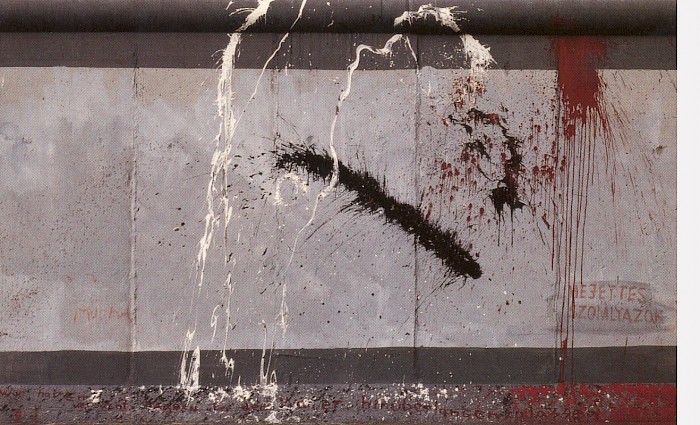
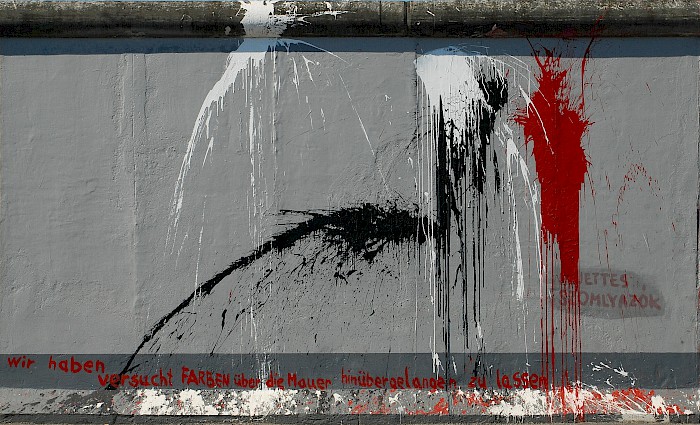
Stellvertretende Durstende: “Wir haben versucht, Farben über die Mauer hinübergelangen zu lassen“
Lost Artwork
Barbara Greul Aschanta, Karin Porath, Bodo Sperling, Siegfried Santoni and Christos Koutsouras did not participate in the renovations in 2008/2009. They founded the “East Side Gallery Founders’ Initiative” with other artists and criticized the renovations and what they saw as a lack of appreciation and financial support and a failure to involve the artists in the process. The sections of the Wall where their paintings had once been are now painted a whitish-gray color, acting as a reminder of how the Wall looked when the city was divided.
